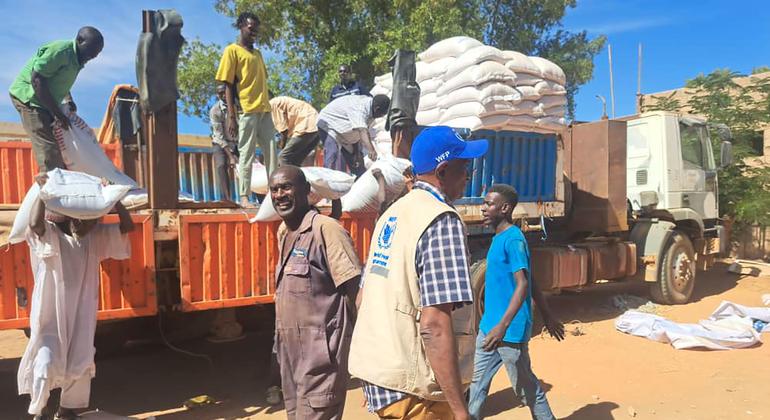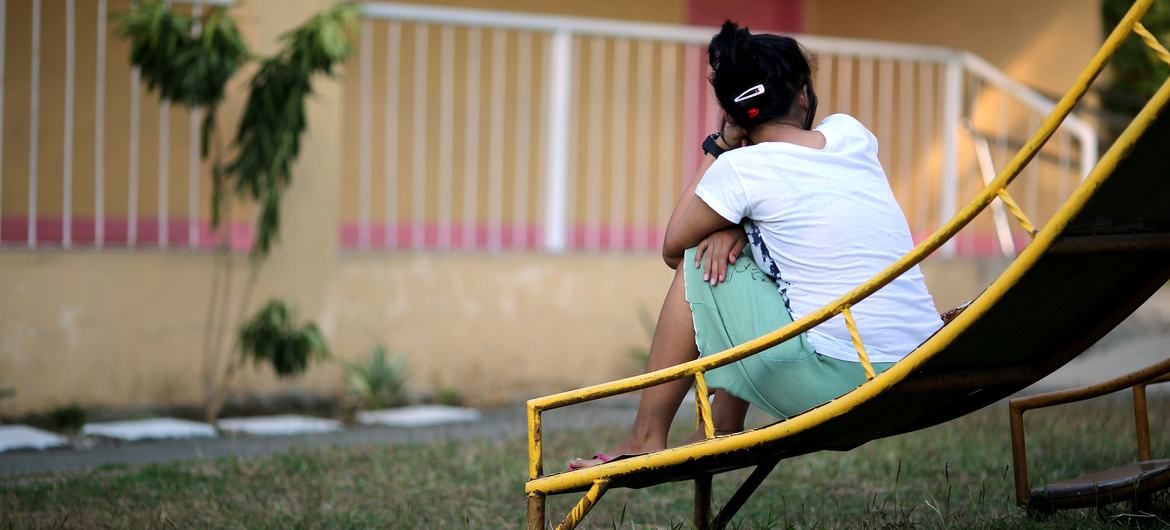Under-Secretary-General for Humanitarian Affairs Tom Fletcher is in the region as a fragile ceasefire and hostage agreement between Israel and Hamas continues to hold in Gaza, amid rising violence in the West Bank.
A car filled with belongings heads back to Rafah, in the southern Gaza Strip.
Aid scale-up
The UN and partners are expanding life-saving aid operations as more humanitarian supplies enter Gaza. They are also assessing the needs of Palestinians across the enclave and adapting the response accordingly.
OCHA noted that displaced people continue to move between southern and northern Gaza as they reunite with family and start rebuilding their lives.
Latest figures indicate that more than 545,000 people are estimated to have crossed from the south to the north over the past week, while more than 36,000 people have been observed moving in the opposite direction.
Keeping children safe
Furthermore, partners working in the protection sector have distributed identity bracelets to more than 30,000 children under the age of four to help prevent family separation.
“This effort was critical, as partners reportedly received more than 250 young children who had been separated from their caregivers while crossing to the north,” OCHA said.
Protection and services
In North Gaza governorate, protection partners said three temporary sites have been established in Beit Hanoun, Beit Lahiya and Jabalya, each of which can host 5,000 people.
The UN’s sexual and reproductive health agency UNFPA has also reported the expansion of protection services for women in Jabalya, as well as in Gaza city.
The World Food Programme (WFP) noted that prices have started to fall since the ceasefire took effect and as more humanitarian commodities enter Gaza, although they still remain above pre-conflict levels.
One-third of households reportedly have better access to food, but consumption remains significantly below levels prior to the crisis. “For most households, the primary obstacle is lack of cash,” OCHA said.
Meanwhile, partners working on education report that some 280,000 school-aged children in Gaza have registered in the e-learning programme run by the UN agency that assists Palestine refugees, UNRWA.
West Bank update
OCHA also reported on the situation in the West Bank, where an ongoing operation by Israeli forces in Jenin and Tulkarm has expanded to nearby Tubas governorate, resulting in further death, destruction and displacement.
The agency warned that “once again that lethal, war-like tactics are being applied, raising concerns over the use of force that exceeds law enforcement standards.”
On Monday, Israeli forces raided El Far’a refugee camp and blocked the entrances. As a result, dozens of families have reportedly fled the camp, fearing a larger Israeli operation.
This came a day after Israeli forces reportedly destroyed 20 residential structures in the Jenin refugee camp where more than 50 families were living.
They also conducted house-to-house searches in the town of Tammun, displacing as many as 15 families and blocking the town’s entrance.
OCHA reported that the Palestinian death toll in recent Israeli operations in the West Bank now stands at 39 since 21 January, the day when the operation in Jenin began.
“Meanwhile, tight movement restrictions across the West Bank continue to hamper access to basic services, leaving Palestinians queuing for hours at Israeli checkpoints or forced to take significantly longer detours,” the agency said.





























